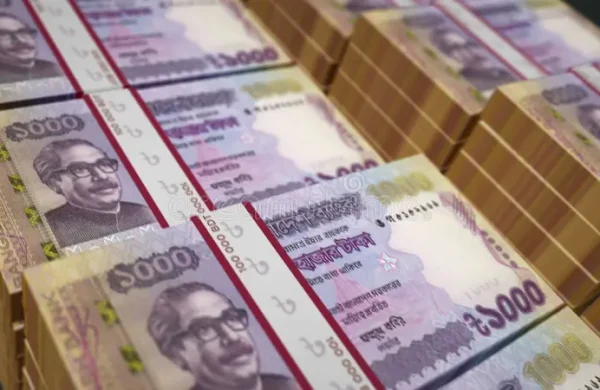BDT appreciates after years of depreciation
- Update Time : Saturday, August 23, 2025

TDS Desk:
Bangladesh currency taka gained value by 0.39 per cent to 122.3 in July against per US dollar, marking its strongest exchange clout that has implications particularly for trade and remittance.
Economists and central bankers attribute the appreciation to a combination of weaker greenback globally, robust remittance inflows and sluggish private-sector- credit growth that curbed import demand.
The July rebound stands in contrast to the currency’s broader trajectory: the BDT depreciated by 3.89 per cent in the fiscal year 2025 and 8.17 per cent in the fiscal year 2024.
When a domestic currency appreciates, it makes import cheaper while export and remittance expensive, says a central banker.
“Our foreign-exchange reserves are in good position and import demand remained poor and so the BDT appreciated.”
The country’s foreign-exchange reserves in August stood at $30.83 billion in gross calculation while as per IMF’s BPM6 measure at $25.82 billion.
He also says the central bank has purchased around US$700 million through August, strengthening its financial position.
In May last, the central bank moved towards a more flexible exchange regime–one of the conditions tied to the current $4.7-billion loan package from the International Monetary Fund (IMF).
This, however, is a reversal from the currency’s weakening trend since 2022.
Some economists see this rebound as a potential relief for inflation as it’s an import-dependent economy. Others remain cautious as to whether the trend should sustain or not.
Dr Zahid Hussain, former lead economist of the World Bank’s Dhaka office, cites both positive and negative factors behind the mighty dollar’s decline.
According to the economist, the main reason is the demand for dollars has weakened as the private investment remained stalled. The private-sector-credit growth slowed to less than 7.0 per cent in June.
“Imports tied to investment, especially capital machinery, have slumped.”
Dr Hussain also questions the central bank’s intervention in the market, arguing that allowing the dollar rate to drop further could help contain inflation.
Globally, analysts say, the greenback has weakened since the assumption of office by Donald Trump and his quixotic decisions on the trading front.
The chaotic rollout of President Trump’s tariffs has prompted investors to question long-held assumptions about the safety and stability of the US dollar, which has plunged in value this year.
In the hunt for alternatives, many have turned to gold and other stable currencies, including the euro.















